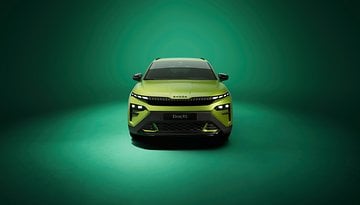Pros and Cons of the Sushi Maki 3.0: A Comprehensive Review
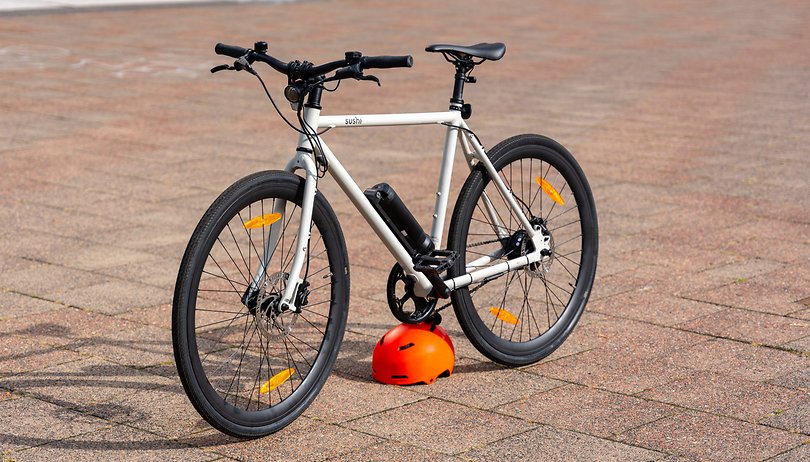

Read in other languages:
The new Maki 3.0 equips Sushi with hydraulic disc brakes and a lighting system. Old qualities such as the simple design as a singlespeed bike and the removable battery including powerbank function are retained. But how does the third version of the e-bike fare in the test? And is the price increase justified? nextpit found out for you in the review of the Sushi Maki 3.0!
Good
- Finally with integrated lights
- Still light and sporty
- Perfect transmission for an input bike
- Battery removable and usable as a powerbank
Bad
- Quite significant price increase
- Standard without mudguards
- No suspension at all
- No smart features

In a nutshell
In the third version, the Maki Sushi introduces several significant innovations, including an integrated light system, hydraulic disc brakes, puncture-proof tires, and ergonomic handlebar grips.
At the same time, valued features such as its low weight and simple design have been retained. This makes the Maki 3.0 the best Sushi bike to date. However, the price has also increased to 1,399 euros (around $1,470).
If you don't mind, you can buy the bike in Sushi's own store. If you want to use the bike all year round, I recommend ordering the additional fenders. Without them, you'll regularly get your pants and jacket soaked in rainy weather. The quick charger also reduces the charging time from 5.5 to 3.5 hours and comes you with 89 euros to stand. Can also be worthwhile!
An observation to note: unfortunately, the Maki Sushi bikes are not officially sold in the USA.
Design & Processing
Sushi is promoting the Maki 3.0 and the step-through version "California Roll 3.0" with the "Everything New" advertising line. Visually, however, one still follows a particularly simple design line. But there are now finally integrated lights, new hydraulic disc brakes and a more ergonomic handlebar. For our test, Sushi also sent us the gray color variant. The weight has remained the same at 16 kg.
Pros:
- The integrated lighting system convinces.
- Three frame sizes for under 1.72 m to over 1.80 m height.
- Nice and light.
Cons:
- Grips quite uncomfortable at the beginning.
- The wiring seemed very fragile during assembly.
- Suspension of the rear wheel caused problems during the test period.
I described the Sushi Maki+ as a "simply ingenious e-fixie" in my review. The previous version exuded a certain minimalist charm, from which the third version has been somewhat detached. The design of the Maki 3.0 is still basic, but we finally find a permanently installed light system on the Sushi bike. And it really does the bike good.
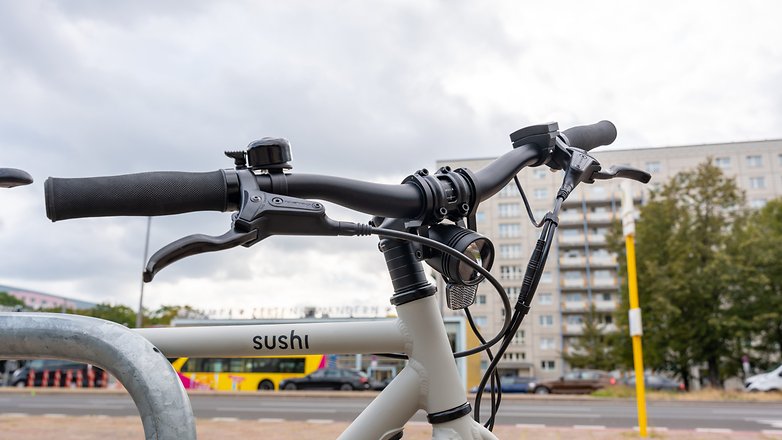
The front light hangs directly in the center under the handlebars and does not interfere with riding or transport. It is StvZO-compliant and surprisingly bright at 1,000 lux. The taillight is mounted under the saddle, and must be connected to the bike's electronics via a luster terminal during assembly.
No rarity in e-bikes, but unfortunately the luster clamp used was so fragile that I had to remove the seat post again after assembly. Here I would have liked a high-quality component.
Apart from that, however, Sushi has not skimped on high-quality components. First and foremost, the hydraulic disc brakes from Tektro, which can be controlled extremely precisely. Unlike, for example, VanMoof with its self-built concept, the Sushi Maki 3.0 also remains compatible with standard parts, making repairs or extensions much easier.
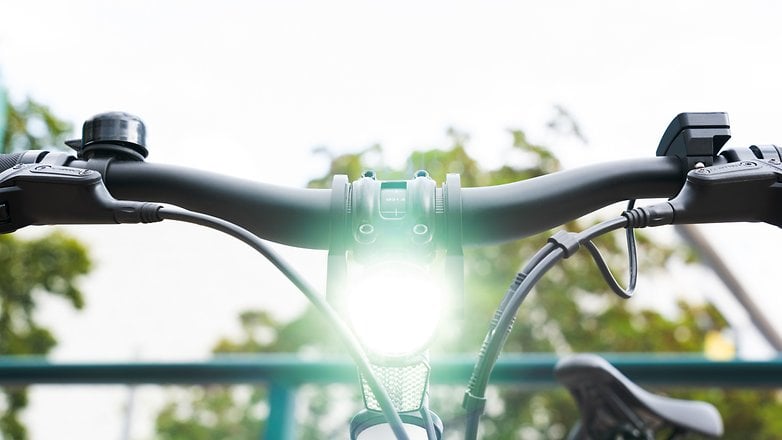
Still pleasing is that Sushi's e-bike is still comparatively light for an e-bike at 16 kg. Sushi makes this possible by using an aluminum frame, only the fork is made of steel. In addition, the e-bike is available in three frame sizes, which means you can find an optimal seating position with anybody size.
Compared to many other e-bikes, such as the Angell M Cruiser or the Urtopia Carbon One, you can adjust the handlebar height to your needs.
Since the handlebar grips with their fine knob structure are quite uncomfortable during the first kilometers, this is also necessary. However, they slowly become softer and a bit more comfortable after just under 30 km. The ergonomic handlebar bar ensures a comfortable sitting position—but that did not really bother the predecessor.
What disappointed me a little was small damage, which I had to determine during the test. Possibly caused by a short jump from a curb, the rear wheel shifted a bit diagonally to the left. This caused it to rub against the frame and slow me down while cycling.
By correcting the chain tensioners on the horizontal dropouts, effectively the suspension of the rear wheel, this could be corrected within a minute. I then rode more carefully, and the problem did not recur a second time.
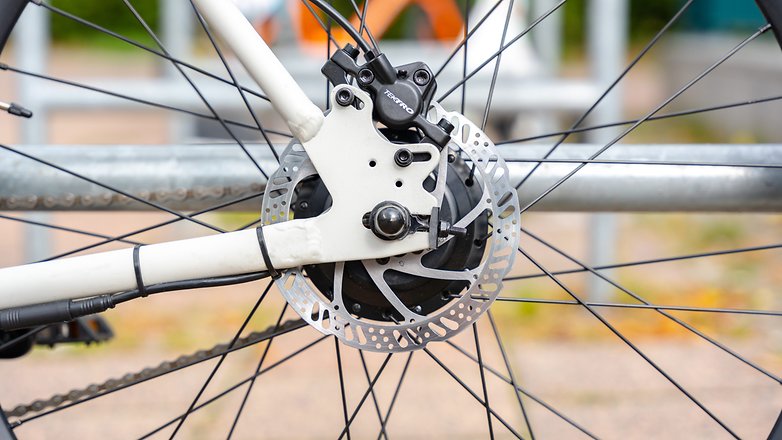
Overall, however, Sushi has kept the tried-and-true design and introduced sensible innovations. As a result, the Maki appears more mature and mature, which makes cycling more fun and, above all, safer. I think that's good!
E-motor and driving fun
The Sushi Maki 3.0 still uses a 250 W rear-wheel motor that is controlled by a rotation sensor on the pedals. In addition, you can adjust the maximum speed of the e-bike in five stages. Hydraulic disc brakes from Tektro and tires with puncture protection provide more safety.
Pros:
- A powerful 250 W motor provides plenty of riding fun.
- It can also be ridden at more than 25 km/h thanks to low weight.
- Great transmission.
- Good brakes.
Cons:
- No suspension.
As I already found out with the Maki+, the Sushi bikes fit best to my riding style in Berlin. Meaning, I'm looking for bikes that are as light and uncomplicated as possible, with which I can reach speeds between 25 and 30 km/h.
Due to the light construction and the good transmission, this is very possible with the Maki 3.0. Sushi again puts a focus on higher speeds instead of simple starting in the design as an input wheel. This makes perfect sense, since you are supported by the electric motor when starting.
The gear ratio is very suitable for faster riding—with other singlespeed models like the Jeep FR 6020 (for review) or the Rover FFR 701, riding at 25 km/h was already extremely uncomfortable.

What has also improved compared to the predecessor model is the braking system. Although Sushi still relies on disc brakes from Tektro, they are now hydraulically controlled. Although this does not improve the braking power of the e-bike, the control when operating the brake levers is more precise.
This ensures more comfort and safety, since the disc brakes are strong enough for the rear wheel to detach from the ground during hazard braking.
Cruising or riding along with other road users is also possible thanks to the speed control of the on-board computer. Nothing has changed here compared to previous models: You see the current speed on the small display and can switch through five support levels. These change the speed, but not the strength of the support.
As an alternative to the on-board computer, you can also control the motor via your cadence. For this purpose, a pedal-assist sensor is located in the bottom bracket, which is oriented to the pedal revolutions.
This does not allow the pedal force to be detected, so riding slowly can sometimes feel a bit awkward. However, since you can limit the speed via the on-board computer, this is not a big deal.
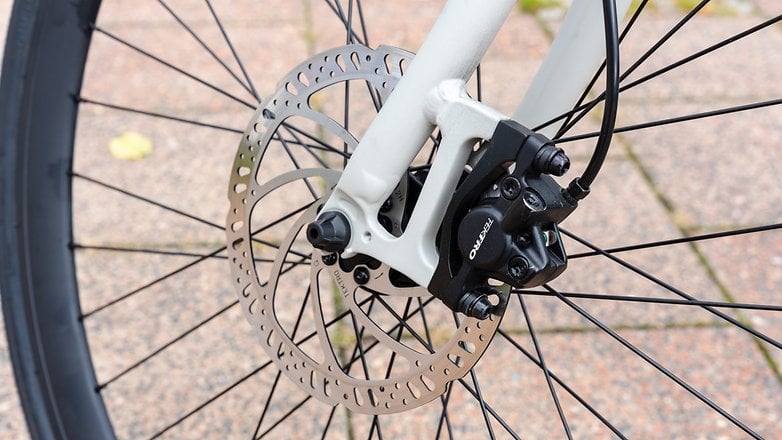
Compared to other e-bikes, the Sushi Maki 3.0 lacks any suspension. That's because the tires also can't absorb shocks as reliably as, for example, the VanMoof S4 (to the test). In places riddled with cobblestones, this can be uncomfortable from time to time. Thus, those who place a special value on comfort should look at other manufacturers.
What Sushi could still improve according to the spec sheet is the permissible total weight. The Maki model should now be able to carry riders with a body weight of up to 120 kg.
Battery and smart features
As in the predecessors, the battery of the Maki 3.0 sits in the frame and looks a bit like a water bottle that has been taken along. You can remove the battery from this easily accessible position via a key and charge it indoors. Practical: You can then use it as a power bank. Rather impractical: The third version of the Maki also lacks all smart features.
Pros:
- Solid range of 75 km.
- The battery can be charged externally and used as a powerbank.
- Full in 3.5 hours via fast charger.
Cons:
- The battery indicator quite imprecise.
- Power saving mode with two bars not configurable.
- No smart functions.
Sushi specifies the maximum range of the Maki 3.0 at 75 km. Nothing has changed here compared to the predecessor, and from my experiences in everyday testing, I rate this specification as realistic. However, with my driving style on full support and regular starting thanks to red lights, I had to plug in again after about 25 to 30 km.
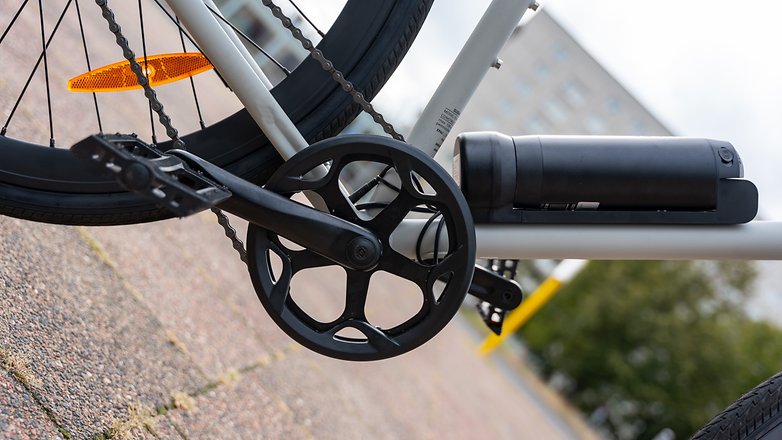
Since the battery of the Maki 3.0 can be removed, charging is extremely convenient. You remove the battery from the frame of the e-bike with a key and charge it indoors. Sushi comes with a standard power adapter that charges the battery in 5.5 hours.
For 89 Euros (around $94), you can buy a quick charger as an accessory and reduce the charging time to 3.5 hours. The ingenious thing about the Sushi Battery is that you can turn the power bank into a huge power bank thanks to the USB-A output. The capacity is 9,600 mAh.
However, two aspects still bother me about the way Sushi handles the e-bike battery. The first is the rather imprecise battery status display, which only shows the remaining battery based on five points. The second is that you cannot activate or deactivate the energy-saving mode yourself. Thus, it is already activated at two bars and does limit the motor performance quite a bit.
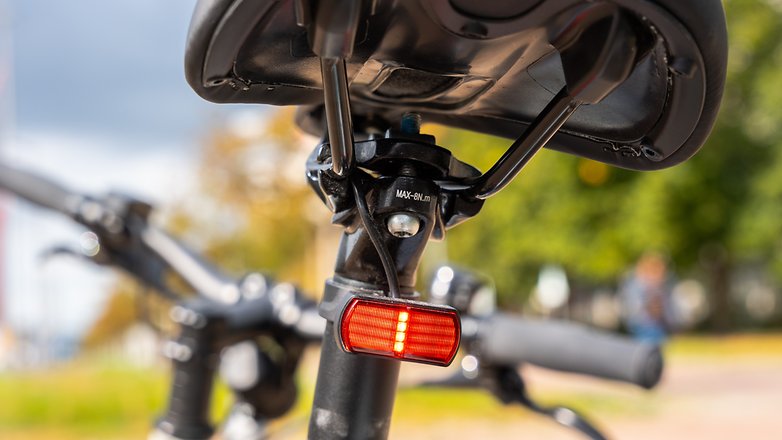
What Sushi could do to remedy all these drawbacks in the future would be to make the e-bike smart via companion app. We've seen how well this can work with the Cowboy Bike C4 (review). Here, an energy-saving mode can be switched on or off as desired. At the same time, we can see the remaining range in kilometers and can even see how much battery will be left when we reach our destination.
The Sushi Maki remains very "unintelligent" even in its third version. Those looking for a bike that is as simple as possible will miss little here. However, if you are looking for technological tricks like the Urtopia Carbon One, you will be disappointed.
Conclusion
With the Maki 3.0 Sushi has managed to combine the character of its predecessors with some meaningful improvements. For the Maki remains as simple an e-fixie as possible, which is particularly suitable for fast riding styles.
Highlights such as the removable battery with its dual role as a power bank and a good gear ratio for higher speeds remain.
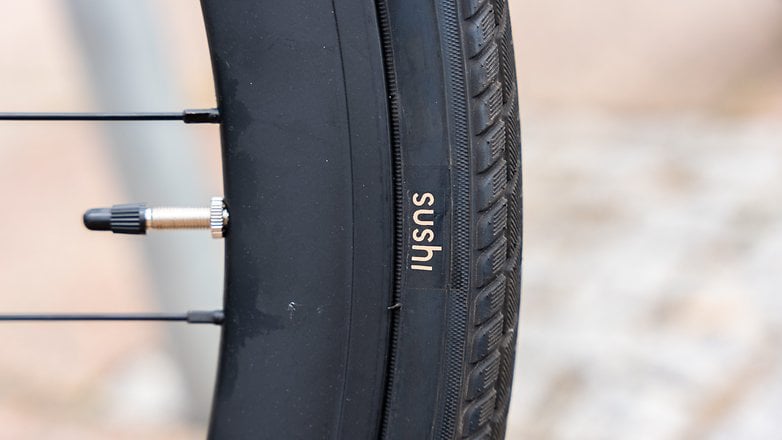
Thanks to new, ergonomic grips, a more precise hydraulic brake system and integrated front and rear lights, the Sushi Maki 3.0 looks even more mature and grown-up.
As a result, the Maki looks less like a singlespeed bike that has been transformed into an e-bike via an aftermarket kit. Everything seems a bit more "rounded" and "integrated" than on earlier versions of the Sushi bike.
- Best list: These e-bikes nextpit recommends in 2023
Despite positive developments, there are also some drawbacks in my test log. For example, the on-board computer is still very rudimentary and comes without any smart features at all. In addition, the rear wheel shifted during the review period when it was heavily loaded by driving off a curb. The fact that neither the frame nor the tires have any suspension effect is also uncomfortable while riding every now and then.
I also find it a bit unfortunate that Sushi raised the price of the Maki 3.0 to almost 1,400 euros (around $1,470). The low cost was a good argument for a high-quality e-bike suitable for everyday use, especially with the predecessor.
Now it seems a bit as if basic features like integrated lights and a higher riding comfort turn the Maki into an expensive e-bike. Unfortunately, it is not yet possible to estimate whether the price will drop a bit in the future.









